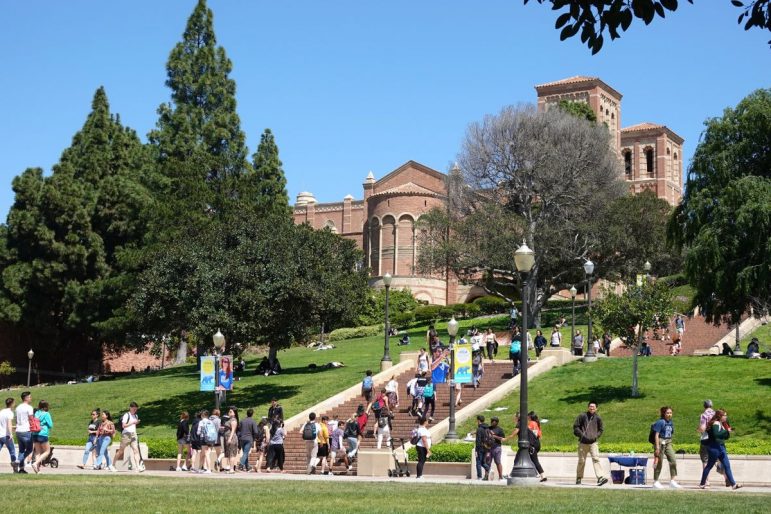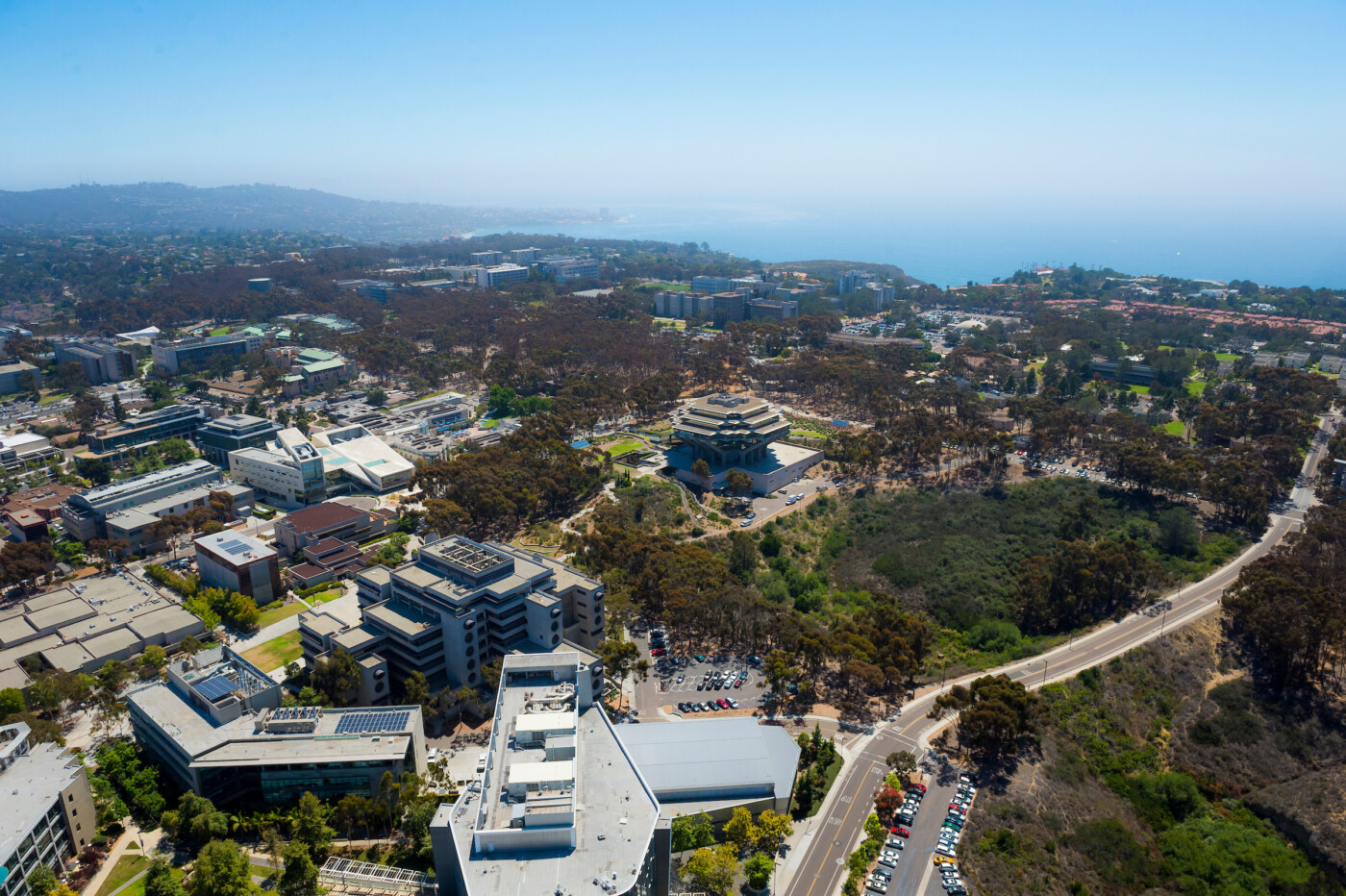For graduating high school seniors planning to attend college next fall, decision day is almost here.
At most universities in California and across the country, May 1 is the deadline for prospective first-year students to accept offers of admission and send in enrollment deposits. It’s also the day when colleges and their admissions officials get an idea of how well they’ve predicted their yield, or the percentage of accepted students who actually end up enrolling.
In California, that guessing game is especially important this year because state lawmakers and Gov. Gavin Newsom have tasked the University of California and California State University systems with enrolling a higher share of in-state students. Both systems are expected to increase undergraduate enrollment of California residents by 1% next academic year, but whether they hit those targets will depend on how many admitted students accept their offers.
“May 1 is definitely a time of excitement. It’s really important around the country that all the schools agree not to make students decide before then, otherwise, this doesn’t work. Hardly any student makes up their mind long before the deadline. A ton of the students will tell us yes within those last 72 hours. And since May 1 falls on a Monday this year, it’ll make for a particularly anxious weekend,” said Jim Rawlins, the associate vice chancellor of enrollment management at UC San Diego, one of the more selective public campuses in the state.
May 1 isn’t the end of the process. Most campuses maintain a waitlist of students who weren’t admitted originally. If the campuses have extra room after decisions come in, they’ll offer spots to students on the waitlist later this spring and into the summer.
Ahead of the May 1 deadline, EdSource recently interviewed Rawlins, the UC San Diego official, to discuss how admissions decisions are made, enrolling more California residents and what students currently on waitlists should expect.
The following conversation has been edited for clarity and length.

EdSource: What is the science behind admissions decisions? How do you ensure you end up hitting your enrollment targets without enrolling more students than you have capacity for?
Rawlins: There are very careful calculations that go into this, because you can’t just guess. This campus itself has had some years over the last few where we came in dramatically over where we meant to be. And it causes some real concern about the amount of space in your classes, your residence halls, things like that. We really examine all the things we can use to try to predict where we land. And we need to leave ourselves enough cushion, so what we’ll typically do leading up to May 1 is make the number of offers so that if things go like we predict they will, we’ll come in at or maybe even a little below where we need to be. And then that’s how a waitlist lets us kind of sneak our way up the rest of the way. And even then, I always say that we are building what we’re doing on the whims of 17-year-olds. So it’s really tricky.
There’s been a big push from lawmakers and Gov. Gavin Newsom for the UC campuses to increase their number of California resident undergraduates. Did that change anything in terms of admissions decisions this year?
That expectation has always been there. We’re always trying to balance in-state versus out-of-state and international for the number of spots we have. But overall there’s definitely this move toward making sure the spots we have within this very large applicant pool, that we take care of Californians first and foremost.
At our campus, in fall 2021, about 30% of our incoming first-year students were out-of-state or international. In fall 2022, it was down to only 19%. So the California side of that was that we went from 70% up to 81%. And we’re aiming to again be in that 80-ish percentage range this year. And it’s a very concerted effort. We really completely agree with that directive. We are the University of California. We’ve got to make those spots available where possible.
Are there any challenges that come with balancing how you decide to admit California residents versus students from out of state?
We essentially have multiple applicant pools because we have a certain number of spots for Californians, so really what we’re doing is we’re looking at all the Californians, predicting how many of them will say yes. And that’s how we make the decision for those April or March offers of admission.
Meanwhile, with out-of-state and international, we’re doing the same thing. Those are both non-California, but I can tell you that their likelihood of coming after being admitted varies greatly between those two groups. So we go through those three things and in each of those cases we’re saying if a California resident accepts our offer at the usual rate, here’s how we make sure we kind of come up to and near, but not over our target line.
After May 1, once you know who’s coming, how do you determine which students to offer admission from the waitlist?
Once we get to May 1, we’re not just looking at our total, but we’re looking at the mix of students in that total. If we were to come in right at where we were funded to do on the California side, we may not be able to go to that part of our waitlist too much. But we can go to out-of-state and international students. But the opposite is what’s more likely to happen most years, where we might come in great for that out-of-state group of our class and then we get to go to those California residents and we’re able to let a few more come in. It varies each year, though.
What is the timeline for when you make those waitlist decisions?
I think we owe it to the families to strike this perfect balance of getting this part over with as fast as possible but also giving them enough time to decide. I love giving the family a full two weeks, because we want them to be able to think it through, get the financial aid part, see how housing works out and really compare that to where they had started to get their heart set on.
But we’re getting faster. I’ve been hearing from some of my high school side colleagues that there are a few institutions around the country — I hope none in this state — that are giving families 24 hours to decide off the waitlist. I think that’s insane. But our goal should and is always to get this wrapped up as soon as possible into the summer, and really not go past June if we can. Last year, we went out to waitlist students in a few rounds. I think our last one might have been sometime in June.
In a typical year, how many students on the waitlist are actually admitted?
I don’t know that we’ve had enough pattern the last few years that there’s been a really predictable range. But I can tell you for fall 2022, students we took off the waitlist ended up accounting for about 5% of our incoming first-year class. That has nothing to do with how it’s going to go this year, though.
If a student tells a specific college by the May 1 deadline that they are planning to attend, but then later finds out they’ve been accepted from the waitlist at another school, what are their options? Can they rescind their commitment to the first campus?
Yeah, they can do that. It’s not like people are going to show up at their home and say, “I’m sorry, you can’t do that, we’re putting you in enrollment jail now.” Some students who aren’t even on waitlists will do it. They are admitted to school A and school B and they will give a deposit to both of them before May 1. We actually check for that within the UC system. And if that student is admitted in both places, somebody contacts that student and says, pick one.
But the waitlist scenario is a little different. And I always feel for these students. My university colleagues around the country might say, “Well this isn’t fair, they already picked somewhere.” But we’re setting them up for this by having a waitlist environment in the first place. And so I say, that’s our problem. But when a student has already deposited at school A and now they get admitted to school B, it’s entirely up to school A as to whether they will give the deposit back. Most of them will call it a non-refundable deposit and it’s meant to cut down on this.
Housing is a huge issue for students in California, and many are likely considering it as they near their decision. What should prospective students know about housing at UC San Diego?
Not only first year, but as of some of our latest construction this fall, we’re now able to offer guaranteed housing for the first two years. And that’s for both first-years and transfers, by the way. We actually have the third-highest number of beds of any institution in the country. And we’re trying to take that up even further. I can look in several different directions from my office and see cranes for the next projects going on and I’ve already heard about two other projects that the cranes aren’t even out yet. So we’re aiming to get up quite a bit. By 2035 we’re aiming to be able to house up to two-thirds of our students on campus.
For students who weren’t admitted to UC San Diego but are considering going to a community college and transferring, what should they know about that process? Is that something you’d encourage them to consider?
We really want students to understand that the path through the California Community Colleges is a fantastic one. We try to really drive that home with them. And as you may already know, to the extent we already do a lot on the first-year side to preserve a pretty big chunk of our spaces for in-state students, we’re even more focused on that with the idea of California Community College students getting the transfer spots. Over 90% of our incoming transfers each year are from a California community college.
So if a student goes to the transfer route, we want to make sure they’re advised. We encourage them to work with the community college’s advising staff. We’re even adding additional positions right now here at UC San Diego to have our staff more embedded in a couple of those colleges where we think it could be of the most help. But those transfer students have some really good paths forward, especially with our local community colleges. And of course, some of those students we started that kind of conversation with two years ago are going to probably and hopefully be in this pool of transfer admission offers we’re about to make. That’ll mean we’ve done it well.
